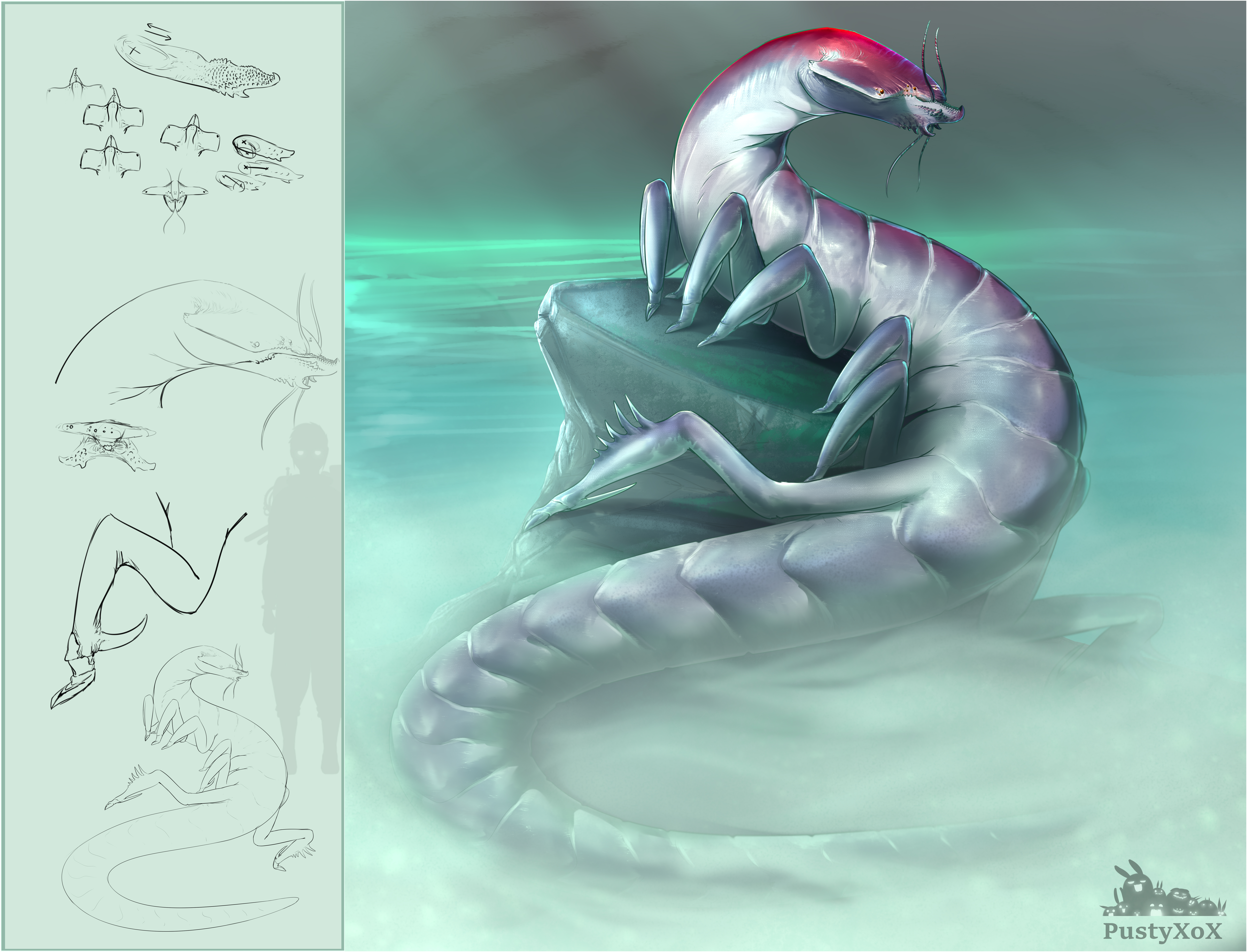HOME | DD
 sCreeble — Waspshark Thing
sCreeble — Waspshark Thing

#hive #shark #wasp #fantasycreature
Published: 2019-07-12 10:05:10 +0000 UTC; Views: 4705; Favourites: 118; Downloads: 17
Redirect to original
Description
Known by many different names by the peoples of the world; sharkwasps, buzzers, stingbeasts, "angry yellow bastards", devilhounds, just to name a few, the notoriety of these infamous insectoid creatures is well established. However, very little is known of their origins. Though most of the naturalists and scholars in the known world agree that these creatures cannot be mere products of nature, due to the strange mixture of traits they possess, ranging from gills, to both internal and external skeletal structures, mammalian lungs, 4 chambered heart, developed brains, keen feline eyes, dagger sized venomous stinger in their rear, how they actually came about is under heavy dispute. Some scholars suggest that they are creations of a spiteful god, sent to punish the mortal races for their sins, others insist that the malice and madness necessary for someone to conceive of crafting such an abomination can only be found among the ranks of wizards. It is however certain, that whoever created them, either lost control over them ages ago, or never had any control of them to begin with.Reaching approximately to the hip of a man in height, individually the sharkwasp is already a dangerous beast. They can move with stunning speed on land, their spring like legs propelling them many times faster than even the finest racehorse, though thankfully only for a brief moment. Usually, that moment is enough though, for if a sharkwasp is able to close the distance, it has multiple deadly weapons at its disposal, which it can use to easily kill it's victims. It's jaws can crush bone and even tear apart chain mail like it was mere cloth, its claws cut trough flesh with sickening ease, and the stinger on it's rear carries a venom that can kill a grown man in minutes. Though they possess wings, thankfully, they are incapable of prolonged flight. These wings do however, allow them to extend the length of their leaps quite significantly, and even scale cliff sides and even castle walls worryingly swiftly.
What makes these creatures truly deadly is however the fact that they are social, and live and hunt in groups, much like wasps they resemble.
At the heart of a sharkwasp hive, is the queen, which is significantly larger than the members of it's brood. The number of sharkwasps in a typical hive ranges from a couple of dozen to even few hundred, depending on the environment, availability of food, and competition with other predators in the region.
A small blessing stemming from the peculiar reproductive cycle of the sharkwasps is their need for water in which they lay their eggs and where they spend the larval stage of their life. Thus, dry and arid regions of the world are relatively, if not completely free of the infestations of these creatures.
The sharkwasp hive typically is constructed on a bank of a river or a lake. The young queen begins by digging a tunnel on the waterfront, mixing her saliva and mud into hard resin like substance to solidify the walls of her nest. The shape of this tunnel allows it to be partially flooded, leaving a dry pocket at it's rear in which the queen gathers food, while the flooded section is where she lays her first batch of eggs. She spends her first months protecting her eggs and hunting food which she will then feed to her young larvae. As the larvae develop, they undergo a metamorphosis into nymphs, which are swift swimmers and capable of hunting their own prey in the body of water to which their nest is connected. After approximately 10-11 months in this nymph stage, they molt into their adult, winged and landbound form, ready to defend their nest and hunt prey on land.
As the brood grows, so does their nest, turning from a mere flooded tunnel to an imposing citadel made out of mud and resin, which have been known to sometimes rival the size of a small castle. A hive of that size is a massive burden on the ecosystem it inhabits, as the ravenous appetite of the sharkwasps takes a heavy toll on the other lifeforms living in the region. The growing hunger of the hive drives it's hunting parties to forage further and further for food, and even to attack towns and cities in search of prey.
At this late stage of development, a sharkwasp hive should be considered a major threat to the settlements of mortal races within a hundred mile radius.
These hives propagate much like wasps do, by periodically producing "princes" and "princesses" who possess well developed wings that allow them to fly away from their birth hive and mate. The males die shortly afterwards, while the females develop into the bulky queens, and start the cycle all over again.
------
A little drawing born out of a silly /tg/ thread.
Soldier silhouette is from here:
www.artstation.com/artwork/Av8…

























